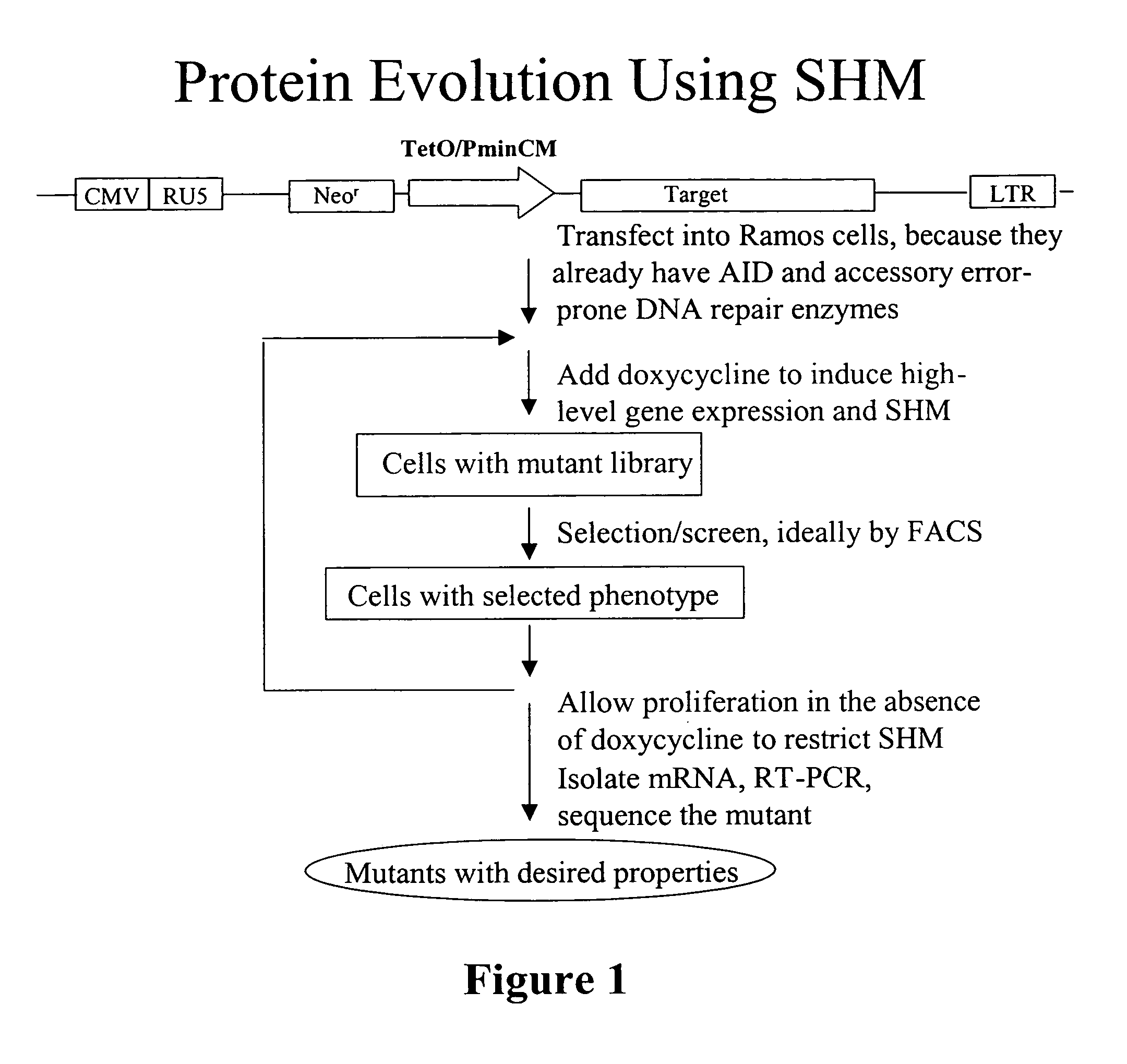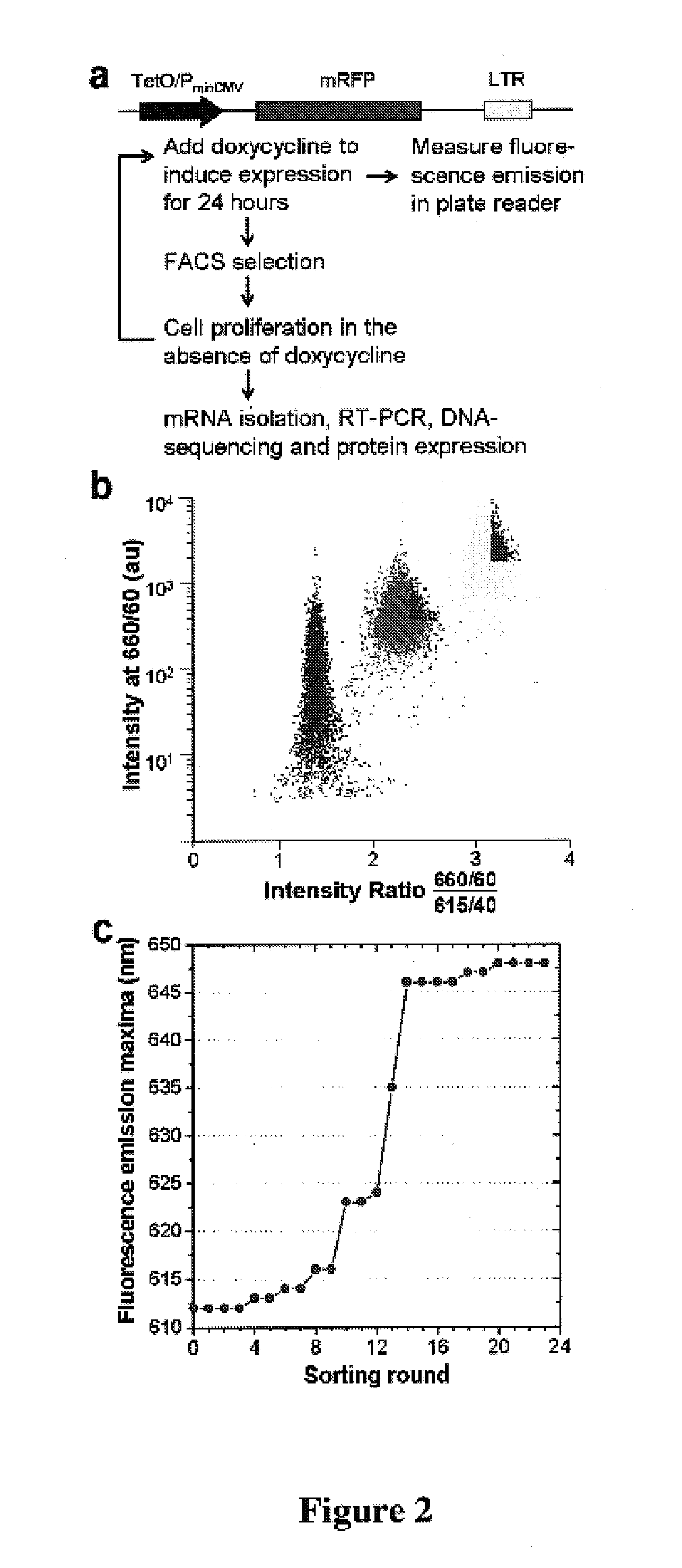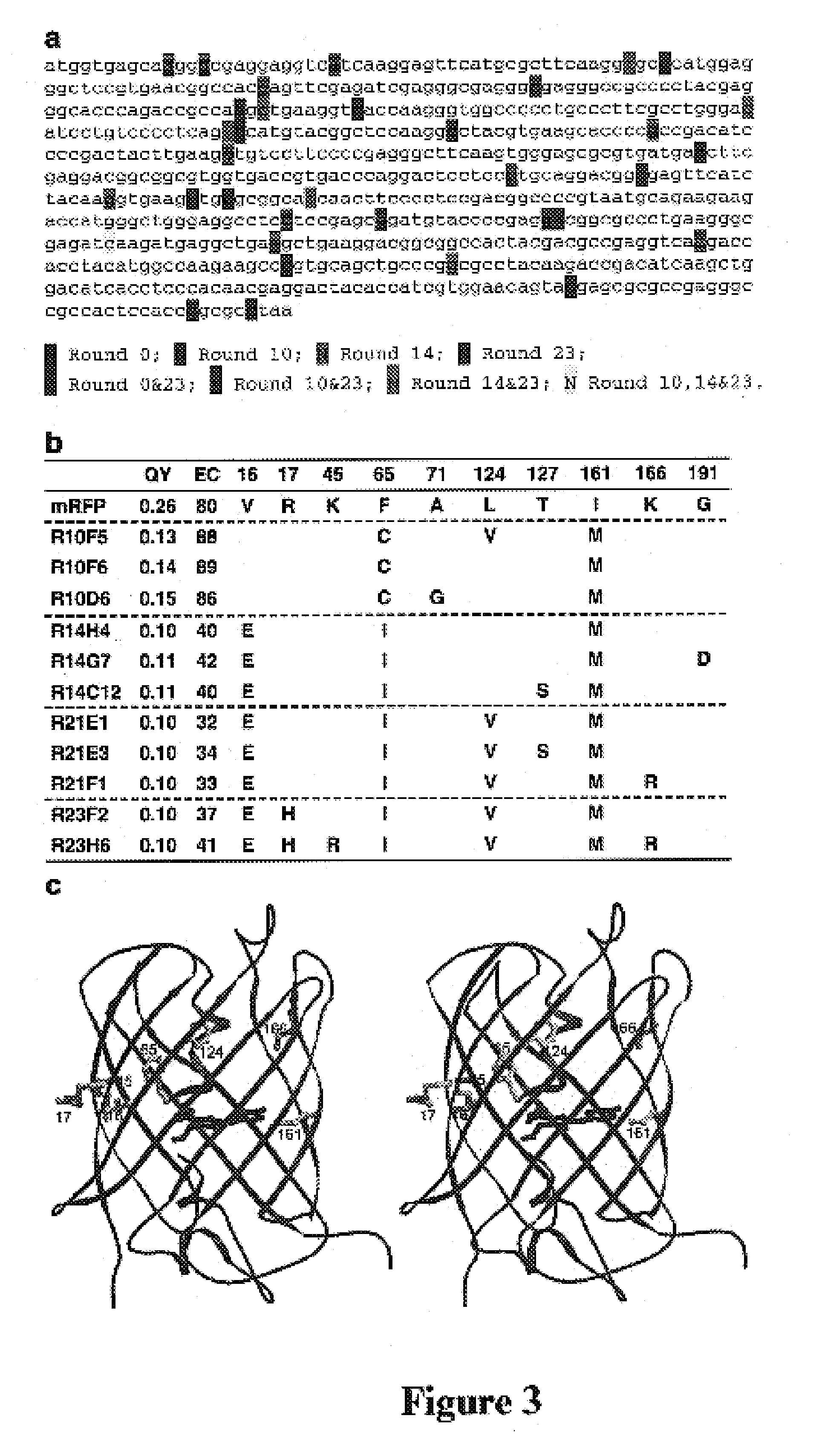Red-shifted fluorescent proteins mPlum and mRaspberry and polynucleotides encoding the same
a technology of fluorescent proteins and polynucleotides, applied in the field of new proteins and nucleic acids, can solve the problems of laborious iterative application of the vitro method for creating genetic diversity, and achieve the effect of increasing photostability
- Summary
- Abstract
- Description
- Claims
- Application Information
AI Technical Summary
Benefits of technology
Problems solved by technology
Method used
Image
Examples
example
[0076]The use of SHM to generate useful genetic diversity into a foreign gene is illustrated in this Example. A general scheme for the use of SHM to generate polypeptide variants is illustrated in FIG. 1. A target gene is included in a nucleic acid message also including at lest one promoter (shown are CMV and Tet-on promoters). Cells capable of supporting SHM (shown here as Ramos cells) are transfected with the message, and induced to express the target gene at high levels (induction is shown here by addition of doxycycline). Induction of high levels of gene expression induces or enhances SHM. Cells are screened for a selected phenotype, such as the presence of a variant target gene product, or variants of the target gene product having desired properties, and cells meeting selection criteria are selected. Selected cells are allowed to proliferate in non-inducing conditions (shown here as the absence of doxycycline). Mutatns having desired properties may be harvested at this point....
PUM
| Property | Measurement | Unit |
|---|---|---|
| diameter | aaaaa | aaaaa |
| diameter | aaaaa | aaaaa |
| pH | aaaaa | aaaaa |
Abstract
Description
Claims
Application Information
 Login to View More
Login to View More - R&D
- Intellectual Property
- Life Sciences
- Materials
- Tech Scout
- Unparalleled Data Quality
- Higher Quality Content
- 60% Fewer Hallucinations
Browse by: Latest US Patents, China's latest patents, Technical Efficacy Thesaurus, Application Domain, Technology Topic, Popular Technical Reports.
© 2025 PatSnap. All rights reserved.Legal|Privacy policy|Modern Slavery Act Transparency Statement|Sitemap|About US| Contact US: help@patsnap.com



